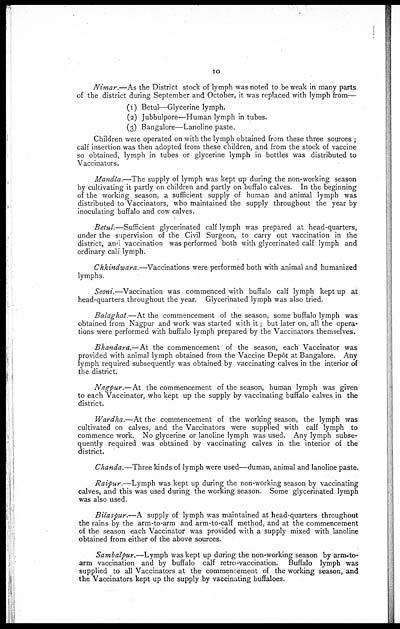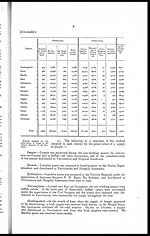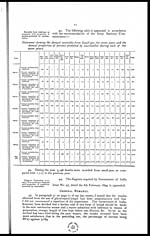Medicine - Vaccination > 1868-1929 - Report on the vaccine operations in the Central Provinces > Vaccine operations Central Provinces 1900-1911 > Notes on vaccination in the Central Provinces for the season 1899-1900
(22) Page 10
Download files
Individual page:
Thumbnail gallery: Grid view | List view

10
Nimar.—As the District stock of lymph was noted to be weak in many parts
of the district during September and October, it was replaced with lymph from—
(1) Betul—Glycerine lymph.
(2) Jubbulpore—Human lymph in tubes.
(3) Bangalore—Lanoline paste.
Children were operated on with the lymph obtained from these three sources ;
calf insertion was then adopted from these children, and from the stock of vaccine
so obtained, lymph in tubes or glycerine lymph in bottles was distributed to
Vaccinators.
Mandla.—The supply of lymph was kept up during the non-working season
by cultivating it partly on children and partly on buffalo calves. In the beginning
of the working season, a sufficient supply of human and animal lymph was
distributed to Vaccinators, who maintained the supply throughout the year by
inoculating buffalo and cow calves.
Betul.—Sufficient glycerinated calf lymph was prepared at head-quarters,
under the supervision of the Civil Surgeon, to carry out vaccination in the
district, and vaccination was performed both with glycerinated calf lymph and
ordinary calf lymph.
Chhindwara.—Vaccinations were performed both with animal and humanized
lymphs.
Seoni.—Vaccination was commenced with buffalo calf lymph kept up at
head-quarters throughout the year. Glycerinated lymph was also tried.
Balaghat.—At the commencement of the season, some buffalo lymph was
obtained from Nagpur and work was started with it; but later on, all the opera-
tions were performed with buffalo lymph prepared by the Vaccinators themselves.
Bhandara.— At the commencement of the season, each Vaccinator was
provided with animal lymph obtained from the Vaccine Depôt at Bangalore. Any
lymph required subsequently was obtained by vaccinating calves in the interior of
the district.
Nagpur.—At the commencement of the season, human lymph was given
to each Vaccinator, who kept up the supply by vaccinating buffalo calves in the
district.
Wardha.—At the commencement of the working season, the lymph was
cultivated on calves, and the Vaccinators were supplied with calf lymph to
commence work. No glycerine or lanoline lymph was used. Any lymph subse-
quently required was obtained by vaccinating calves in the interior of the
district.
Chanda.—Three kinds of lymph were used—duman, animal and lanoline paste.
Raipur.—Lymph was kept up during the non-working season by vaccinating
calves, and this was used during the working season. Some glycerinated lymph
was also used.
Bilaspur.—A supply of lymph was maintained at head-quarters throughout
the rains by the arm-to-arm and arm-to-calf method, and at the commencement
of the season each Vaccinator was provided with a supply mixed with lanoline
obtained from either of the above sources.
Sambalpur.—Lymph was kept up during the non-working season by arm-to-
arm vaccination and by buffalo calf retro-vaccination. Buffalo lymph was
supplied to all Vaccinators at the commencement of the working season, and
the Vaccinators kept up the supply by vaccinating buffaloes.
Set display mode to: Large image | Zoom image | Transcription
Images and transcriptions on this page, including medium image downloads, may be used under the Creative Commons Attribution 4.0 International Licence unless otherwise stated. ![]()
| Permanent URL | https://digital.nls.uk/91520260 |
|---|
| Attribution and copyright: |
|
|---|




